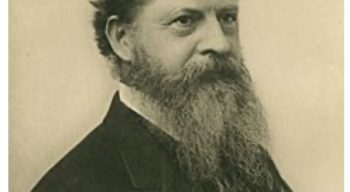
So, you have made a number of observations and have been made aware of a number of details that could set you on the path to resolving whatever mission you have set yourself.
’It is a capital mistake to heroine before before one has data. Insensibly one begins to twist facts to suit theories instead of theories to suit facts’
How then, do we develop our theories that are made from these facts? What do we do with this knowledge that we have now?
Enter, Charles Sanders Peirce…

Known as the Godfather of Pragmatic thought he gives us the idea of thinking, that we are perhaps most aware of through the Sherlockian approach – Deduction.
Sherlock’s approach is more akin to Inductive reasoning but there is also abductive reasoning to consider as well. If we pair inductive and deductive reasoning together, due them having the same direction in thought. Abductive reasoning stands in opposition.
Deduction
This is where data gives the natural cause and effect to observations and as such, the end game is apparent. If we had money go missing from our business and our staff comprised of several people with priors in larceny then we might reasonably deduce that they would be the best place to start our investigation.
Induction
This follows the same direction as deduction however differs in terms of what is most likely as a result, as a statistical likelihood. If we take the above dynamic we might be able to reasonably induce that the members of staff with previous may have details regarding the whereabouts of the funds, at the very least.
Abduction
This would provide an analysis of the events that led up to the example of the funds going missing. In this scenario it may be that in talking to a few of these people we understand that they had no opportunity to take the funds, so we can reasonably abduce that they do not have the money
This can therefore be applied to every situation we face based on the information that we have to work with. We are essentially asking ourselves, what has been true in order to lead up to the situation that I see before me? and what will be true or most likely to be true moving on from this situation?
To apply Deductive/Inductive reasoning to this we might ask ourselves where this person is at this time? What the papers are on the floor? Is there an order to the papers? Why is the computer still on? Who took the photo? This would give us the proverbial data to examine, moving forward from this moment. To apply our abductive reasoning we might look at this and ask, are all the clothes on the floor male or female? Is there a pile to the papers on the floor or have they fallen? Why are trousers neatly on the back of the chair yet some clothes are on the floor? Is there a genre to the books or style?
Examining these answers based on our pragmatic thought will illuminate the details to such a degree that you will be able to answer the most obscure of questions. Applying these directions of logical thought and rationality to any given set of details will mean that you will be able to design theories based on facts instead of vice versa, as Holmes alludes to.
From here you can examine your observations based on your own pragmatic analysis and review these inline with the data that you currently have.
These are the observations I made in the experiment I ran. All were confirmed.
This is one of many techniques included in The Monographs that you can use to strengthen your mind and sharpen your thoughts in approaching logic puzzles of any nature. Whether it is crime solving, people reading or anything in between.
To explore what life would be like through the eyes of Sherlock Holmes, get yours here. MX Publishing Link to get your own copy!
Keep me posted on how you are getting on with your cases!
If I can be of assistance then do let me know. Keep your eyes peeled for more musings